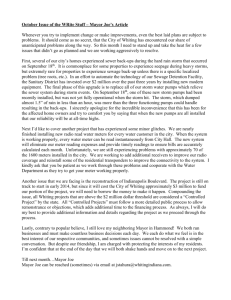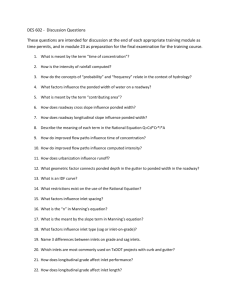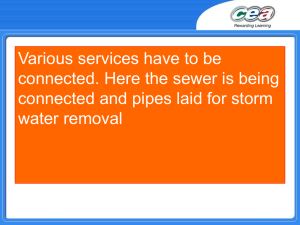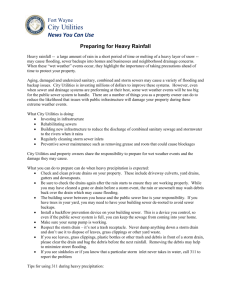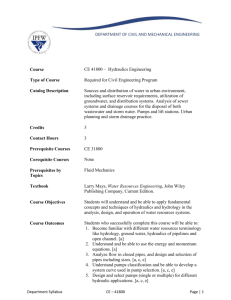Microsoft Word version
advertisement
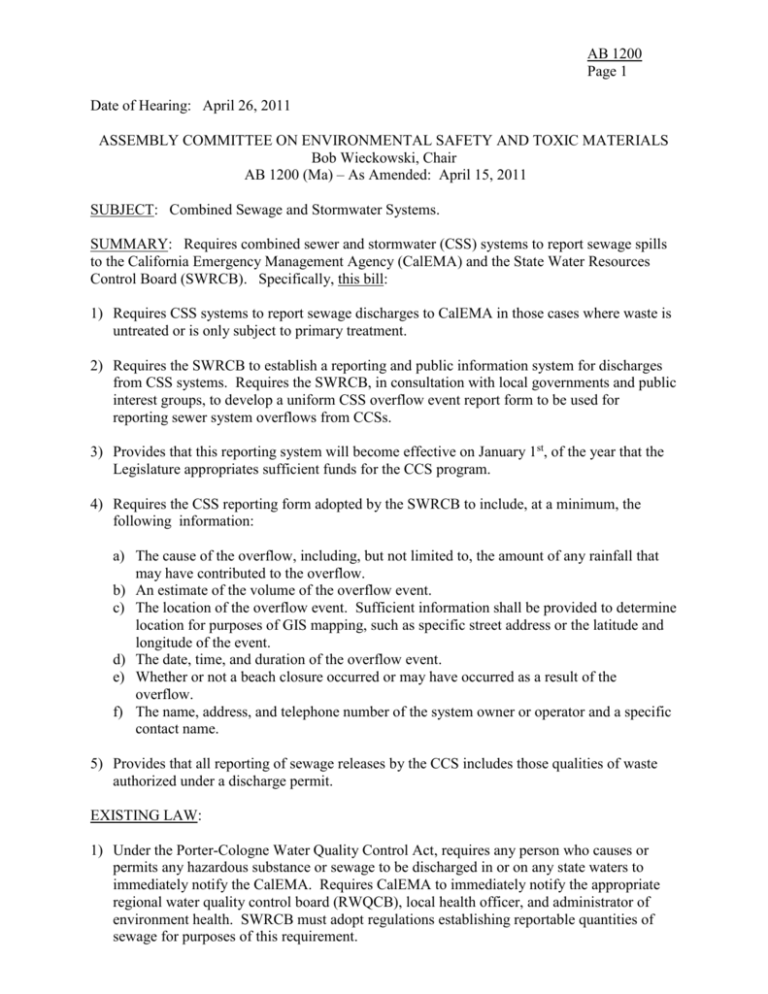
AB 1200 Page 1 Date of Hearing: April 26, 2011 ASSEMBLY COMMITTEE ON ENVIRONMENTAL SAFETY AND TOXIC MATERIALS Bob Wieckowski, Chair AB 1200 (Ma) – As Amended: April 15, 2011 SUBJECT: Combined Sewage and Stormwater Systems. SUMMARY: Requires combined sewer and stormwater (CSS) systems to report sewage spills to the California Emergency Management Agency (CalEMA) and the State Water Resources Control Board (SWRCB). Specifically, this bill: 1) Requires CSS systems to report sewage discharges to CalEMA in those cases where waste is untreated or is only subject to primary treatment. 2) Requires the SWRCB to establish a reporting and public information system for discharges from CSS systems. Requires the SWRCB, in consultation with local governments and public interest groups, to develop a uniform CSS overflow event report form to be used for reporting sewer system overflows from CCSs. 3) Provides that this reporting system will become effective on January 1st, of the year that the Legislature appropriates sufficient funds for the CCS program. 4) Requires the CSS reporting form adopted by the SWRCB to include, at a minimum, the following information: a) The cause of the overflow, including, but not limited to, the amount of any rainfall that may have contributed to the overflow. b) An estimate of the volume of the overflow event. c) The location of the overflow event. Sufficient information shall be provided to determine location for purposes of GIS mapping, such as specific street address or the latitude and longitude of the event. d) The date, time, and duration of the overflow event. e) Whether or not a beach closure occurred or may have occurred as a result of the overflow. f) The name, address, and telephone number of the system owner or operator and a specific contact name. 5) Provides that all reporting of sewage releases by the CCS includes those qualities of waste authorized under a discharge permit. EXISTING LAW: 1) Under the Porter-Cologne Water Quality Control Act, requires any person who causes or permits any hazardous substance or sewage to be discharged in or on any state waters to immediately notify the CalEMA. Requires CalEMA to immediately notify the appropriate regional water quality control board (RWQCB), local health officer, and administrator of environment health. SWRCB must adopt regulations establishing reportable quantities of sewage for purposes of this requirement. AB 1200 Page 2 2) Under Community Facilities Law (general provisions with respect to sewers), requires the State Department of Public Health (DPH) or any local health officer to order contamination to be abated. When DPH finds that a pollution or nuisance exists, the condition must be referred by DPH to the RWQCB with any recommendations for correction. 3) Requires local sanitary system owners and operators to report sewer system overflows to the RWQCB and include detailed information about the overflow, including location, cause, and environmental effects. FISCAL EFFECT: Not Known COMMENTS: Need for the bill: According to the author, "Assembly Bill 1200 was introduced in the midst of a wet rain year that led to 226 million gallons of combined sewage and stormwater discharged by San Francisco in the month of December, 2010. AB 1200 closes a loophole in current law that exempts combined systems from timely public notification and disclosure procedures. "AB 1200 ensures that San Francisco lives up to its historic leadership role of environmental stewardship," said Assemblywoman Ma. "This bill will make us lead by example. We've been flushing our toilets into the bay and ocean and people have a right to know when the water is polluted as soon as possible." San Francisco's combined sewer system: According to the SWRCB, conventional storm water is managed using a centralized approach; storm water is funneled through various catchments (i.e. storm drains) and conveyance systems. In older cities, combined sewer and storm systems may be routed to a waste water treatment plant for treatment, however in most California cities and towns storm water is discharged directly into streams, bays, estuaries, and other local bodies of water though storm water outlets. Combined sewer and storm systems were very common prior to the early 1900s, e.g. older parts of Sacramento and San Francisco have combined sewer and storm systems. These combined sewer and storm water systems can overflow during storm events causing untreated sewage and storm water to flow directly into nearby water bodies, thus resulting in violations of municipal National Pollutant Discharge Elimination System (NPDES) permits and causing harm to aquatic life and humans. Separate sanitary sewer systems also have the potential to overflow during high storm events due to system leaks and groundwater infiltration. Both combined storm and sewer, and separate sewer overflows are regulated under Municipal NPDES Permits. According to the San Francisco Public Utilities Commission, which operated the San Francisco combines sewer system," in cases of a combines sewer discharge (CSD), a discharge of wastewater from an undesignated location into receiving waters, would be required to report “not later than two (2) hours after becoming aware of the discharge to the State Office of Emergency Services, the local health officers or directors of environmental health with jurisdiction over the affected water bodies, and the Regional Water Board." REGISTERED SUPPORT / OPPOSITION: Support AB 1200 Page 3 San Francisco Baykeeper Opposition San Francisco Public Utilities Commission California Association of Sanitation Agencies Analysis Prepared by: Bob Fredenburg / E.S. & T.M. / (916) 319-3965
